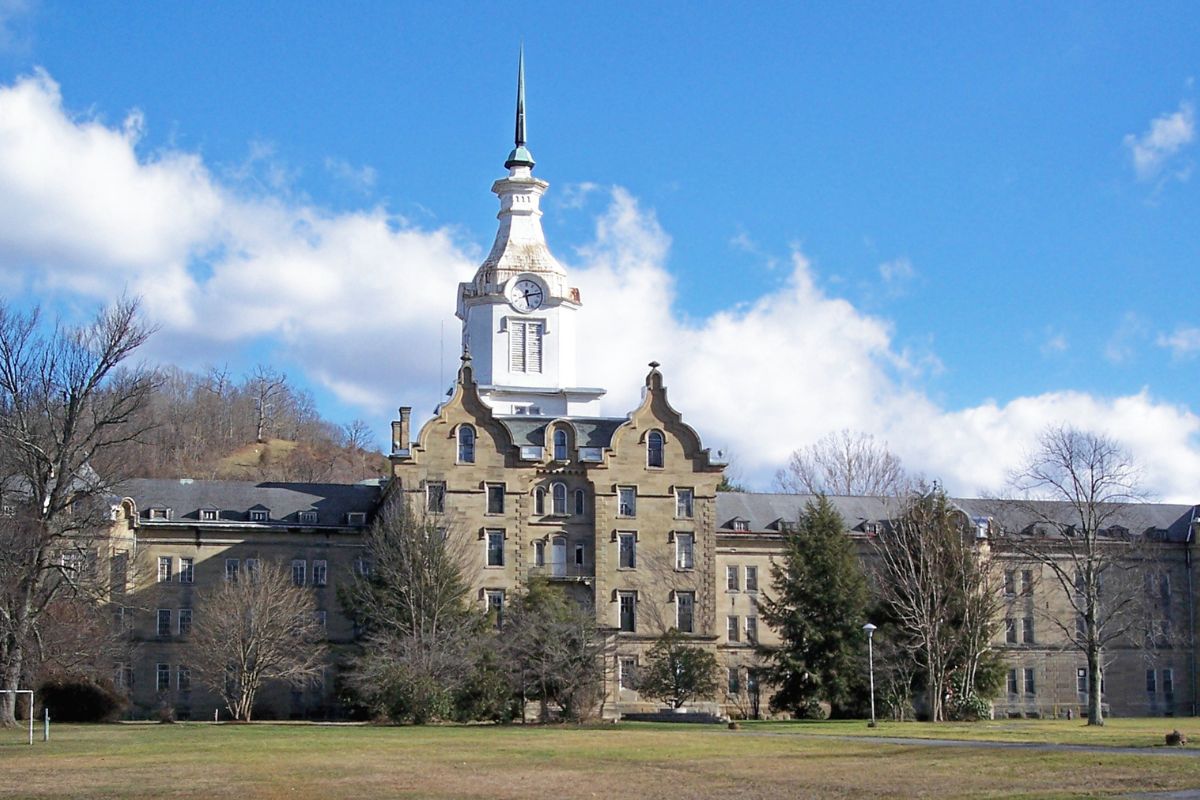Secrets Of West Virginia’s Trans-Allegheny Lunatic Asylum Gothic Design

Step into the mysterious world of the Trans-Allegheny Lunatic Asylum in West Virginia, where history and architecture blend in a hauntingly beautiful way. This massive structure, built in the mid-1800s, stands as a testament to Gothic design. Its towering spires, intricate stonework, and expansive corridors tell stories of the past. Originally designed to house patients with mental illnesses, the asylum's architecture was meant to provide a sense of peace and healing. However, its eerie charm has drawn curious visitors from all over. Whether you're a history buff or just love a good ghost story, this place offers a unique glimpse into a bygone era. Wander through its halls, and you might just feel the whispers of those who once called it home.
Unraveling the Mysteries of Trans-Allegheny Lunatic Asylum
West Virginia's Trans-Allegheny Lunatic Asylum is a place where history and mystery intertwine. This architectural marvel, with its Gothic design, has intrigued visitors for years. Let's explore some of the secrets hidden within its walls.
The Grand Kirkbride Design
The asylum's design follows the Kirkbride Plan, a revolutionary approach to mental health care in the 19th century. This plan emphasized light, air, and space, creating a therapeutic environment for patients.
Central Administration Building
The heart of the asylum, this building boasts a stunning clock tower and intricate stonework. Its grandeur reflects the importance placed on mental health care during its time.Sprawling Wings
Designed to maximize sunlight and fresh air, the wings extend from the central building like arms. Each wing housed different patient groups, ensuring a structured environment.
Intricate Architectural Details
The asylum's Gothic design is rich with intricate details that captivate the imagination. From pointed arches to elaborate carvings, every corner tells a story.
Gothic Arches
These arches are not just decorative; they symbolize strength and stability. Their pointed design draws the eye upward, creating a sense of awe.Stone Carvings
Look closely at the stonework, and you'll find faces and figures etched into the walls. These carvings add an eerie yet fascinating element to the building's facade.
Hidden Passageways and Secret Rooms
Beyond its visible beauty, the asylum holds secrets in its hidden passageways and rooms. These spaces were used for various purposes, adding to the building's mystique.
Underground Tunnels
These tunnels connected different parts of the asylum, allowing discreet movement of staff and supplies. Today, they add an element of mystery to the building's history.Secret Attic Rooms
Tucked away in the attic are rooms that once served as storage or isolation spaces. Their existence fuels speculation about the asylum's past.
The Asylum's Haunting Legacy
The Trans-Allegheny Lunatic Asylum is not just an architectural wonder; it's also known for its haunting tales. Stories of spirits and unexplained phenomena have become part of its legacy.
Ghostly Apparitions
Visitors and staff have reported seeing figures in the hallways, believed to be spirits of former patients. These sightings add a chilling layer to the asylum's history.Unexplained Sounds
Echoes of footsteps and whispers are often heard in empty corridors. These sounds keep the legend of the asylum alive, drawing curious visitors from around the world.
The Allure of Gothic Architecture
West Virginia's Trans-Allegheny Lunatic Asylum stands as a testament to the enduring allure of Gothic architecture. Its towering spires, intricate stonework, and haunting beauty captivate visitors, offering a glimpse into a bygone era. This architectural marvel not only served a functional purpose but also reflected the Victorian era's fascination with grandeur and mystery. Walking through its halls, one can almost hear the whispers of the past, feel the weight of history, and appreciate the craftsmanship that went into its creation. The asylum's design tells stories of both innovation and tragedy, making it a unique landmark in American history. For those interested in architecture, history, or the paranormal, this site offers a rich tapestry of experiences. Its Gothic design continues to inspire awe and curiosity, reminding us of the power of architecture to shape our understanding of the past.

